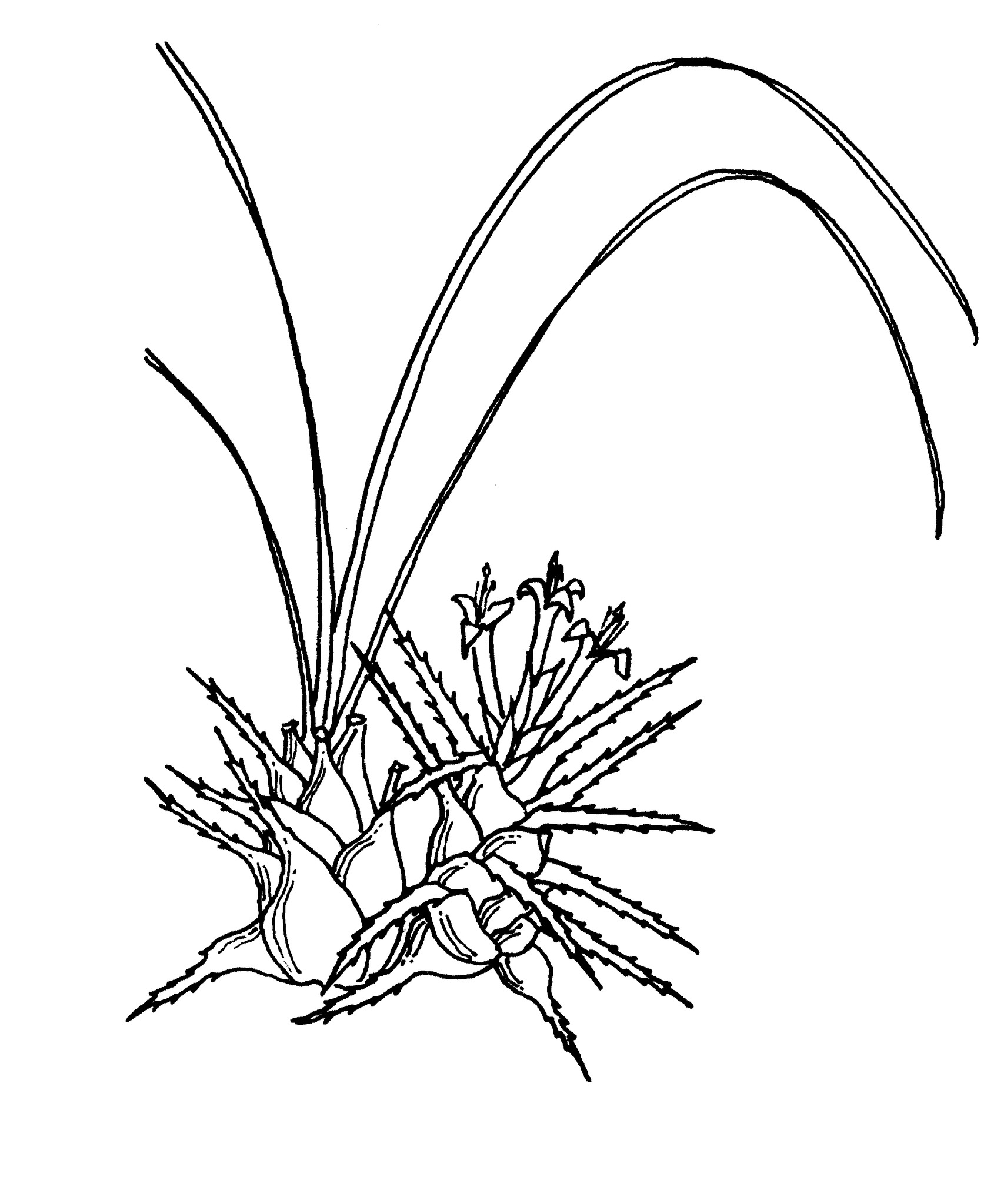
Named after Dr William Pitcairn (1711–1791), a London physician.
Small to large plants. Leaves fasciculate, many-ranked or rarely distichous; sheath small; blade linear to broadly lanceolate, stalked, sometimes strongly dimorphic (two types of leaves), entire or spined, sometimes deciduous by a straight transverse line. Scape usually present. Inflorescence simple or compound; floral bracts varying in size. Flowers long stalked to stalkless; sepals free, petals free, usually slightly irregular. Ovary from almost wholly superior to wholly inferior. Seed narrow with a tail at both ends.
The grass-like leaves tend to discourage growers despite their somewhat spectacular flowers. Only a few in cultivation because of difficulty through winter.
About 270 species from tropical North and South America.
Source: (2005). Bromeliaceae. In: . Horticultural Flora of South-eastern Australia. Volume 5. Flowering plants. Monocotyledons. The identification of garden and cultivated plants. University of New South Wales Press.
